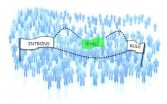(Press-News.org) The surprising discovery of a massive outburst in a neighboring galaxy is giving astronomers a tantalizing look at what likely is a powerful belch by a gorging black hole at the galaxy's center. The scientists were conducting a long-term study of molecules in galaxies, when one of the galaxies showed a dramatic change.
"The discovery was entirely serendipitous. Our observations were spread over a few years, and when we looked at them, we found that one galaxy had changed over that time from being placid and quiescent, to undergoing a hugely energetic outburst at the end," said Robert Minchin, of Arecibo Observatory, who presented the research.
The scientists were using the National Science Foundation's (NSF) 305-meter William E. Gordon Telescope at Arecibo for their study when they discovered the outburst in NGC 660, a spiral galaxy 44 million light-years distant in the constellation Pisces. The outburst was ten times brighter than the largest supernova, or exploding star. They reported their findings at the American Astronomical Society's meeting in Long Beach, California.
After detecting the outburst, the team continued to observe NGC 660 with the Arecibo Telescope, and also sought to determine the cause of the outburst using an international network of telescopes to make a detailed image of the galaxy.
"High-resolution imaging is the key to understanding what's going on," said Emmanuel Momjian, of the National Radio Astronomy Observatory (NRAO). "We needed to know if the outburst came from a supernova in this galaxy or from the galaxy's core. We could only do that by harnessing the high-resolution imaging power we get by joining widely-separated radio telescopes together."
The astronomers used a network called the High Sensitivity Array (HSA), composed of the NSF's Very Long Baseline Array (VLBA), a continent-wide system of ten radio telescopes ranging from Hawaii to the Virgin islands; the Arecibo Telescope; the NSF's 100-meter Green Bank Telescope in West Virginia; and the 100-meter Effelsberg Radio Telescope of the Max Planck Institute for Radio Astronomy in Germany.
"By adding the large collecting area of the three big dishes to the VLBA, we got the images much more quickly. What we did with the HSA in less than half a day would have taken nearly nine days with the VLBA alone," Momjian said.
The resulting images were more complex than the scientists expected. They thought they would see either the ring of an expanding supernova or a jet of superfast material from the galaxy's core. Instead, they saw five sites of bright radio emission, one near the center of the galaxy and two on either side.
"The most likely explanation is that there are jets coming from the core, but they are precessing, or wobbling, and the hot spots we see are where the jets slammed into material near the galaxy's nucleus," said Chris Salter, of Arecibo Observatory. "To confirm this, we will continue to observe the galaxy with the HSA over the next few years," he added.
If the jet idea is correct, the outburst probably was caused by material pulled into the supermassive black hole at the center of the galaxy. The material would form a rapidly-spinning disk around the black hole before finally falling into it, and the disk would generate jets of particles blasting outward at nearly the speed of light.
Astronomers are carefully watching a gas cloud in our own Milky Way Galaxy that is expected to fall into our Galaxy's central black hole in the middle of this year.
###
The National Radio Astronomy Observatory is a facility of the National Science Foundation, operated under cooperative agreement by Associated Universities, Inc. The Arecibo Observatory is operated by SRI International under a cooperative agreement with the National Science Foundation (AST-1100968), and in alliance with Ana G. Méndez-Universidad Metropolitana, and the Universities Space Research Association.
Massive outburst in neighbor galaxy surprises astronomers
Serendipitous discovery reveals probable belch by a gorging black hole
2013-01-07
ELSE PRESS RELEASES FROM THIS DATE:
Major cuts to surging CO2 emissions are needed now, not down the road, study finds
2013-01-07
Irvine, Calif., Jan. 7, 2013 – Halting climate change will require "a fundamental and disruptive overhaul of the global energy system" to eradicate harmful carbon dioxide emissions, not just stabilize them, according to new findings by UC Irvine and other scientists.
In a Jan. 9 paper in Environmental Research Letters, UC Irvine Earth system scientist Steve Davis and others take a fresh look at the popular "wedge" approach to tackling climate change outlined in a 2004 study by Princeton scientists Stephen Pacala and Robert Socolow. They had argued that the rise of dangerous ...
Dark matter made visible before the final cut
2013-01-07
CHAPEL HILL, N.C. – Research findings from the University of North Carolina School of Medicine are shining a light on an important regulatory role performed by the so-called dark matter, or "junk DNA," within each of our genes.
The new study reveals snippets of information contained in dark matter that can alter the way a gene is assembled.
"These small sequences of genetic information tell the gene how to splice, either by enhancing the splicing process or inhibiting it. The research opens the door for studying the dark matter of genes. And it helps us further understand ...
Italian immigrants live longer
2013-01-07
Although immigrants from Italy and their offspring form one of the largest demographic groups in Switzerland, there are hardly any studies on their state of health and risk of mortality. In a first for Switzerland, Silvan Tarnutzer and Matthias Bopp from the University of Zurich's Institute of Social and Preventative Medicine calculated unbiased mortality risks for people with an Italian migrant background.
Immigrants from Italy live longer than Swiss people
Compared to Swiss people born in Switzerland, immigrant Italians exhibit a mortality risk that is roughly ten ...
Sublingual immunotherapy shows promise as treatment for peanut allergy
2013-01-07
CHAPEL HILL, N.C. – Peanuts are one of the most common triggers of severe food-induced allergic reactions, which can be fatal, and the prevalence of peanut allergy is increasing. However, there is currently no clinical treatment available for peanut allergy other than strict dietary elimination and, in cases of accidental ingestion, injections of epinephrine.
But a new multicenter clinical trial shows promise for sublingual immunotherapy (SLIT), a treatment in which patients are given daily doses, in gradually increasing amounts, of a liquid containing peanut powder. ...
Protein production: Going viral
2013-01-07
VIDEO:
The human TFIID core complex contains two copies each of TAF4 (green), TAF5 (red), TAF6 (blue), TAF9 (light blue) and TAF12 (light green). The density determined by cryo-electron microscopy is...
Click here for more information.
A research team of scientists from EMBL Grenoble and the IGBMC in Strasbourg, France, have, for the first time, described in molecular detail the architecture of the central scaffold of TFIID: the human protein complex essential for transcription ...
Even brief interruptions spawn errors
2013-01-07
EAST LANSING, Mich. — Short interruptions – such as the few seconds it takes to silence that buzzing smartphone – have a surprisingly large effect on one's ability to accurately complete a task, according to new research led by Michigan State University.
The study, in which 300 people performed a sequence-based procedure on a computer, found that interruptions of about three seconds doubled the error rate.
Brief interruptions are ubiquitous in today's society, from text messages to a work colleague poking his head in the door and interrupting an important conversation. ...
15 new planets hint at 'traffic jam' of moons in habitable zone
2013-01-07
Volunteers from the Planethunters.org website, part of the Oxford University-led Zooniverse project, have discovered 15 new planet candidates orbiting in the habitable zones of other stars.
Added to the 19 similar planets already discovered in habitable zones, where the temperature is neither too hot nor too cold for liquid water, the new finds suggest that there may be a 'traffic jam' of all kinds of strange worlds in regions that could potentially support life.
Rather than being seen directly, the new planet candidates were found by Planethunters.org volunteers looking ...
3-D color X-Ray imaging radically improved for identifying contraband, corrosion or cancer
2013-01-07
Scientists at The University of Manchester have developed a camera that can be used to take powerful three dimensional colour X-ray images, in near real-time, without the need for a synchrotron X-ray source.
Its ability to identify the composition of the scanned object could radically improve security screening at airports, medical imaging, aircraft maintenance, industrial inspection and geophysical exploration.
The X-Ray system developed by Professor Robert Cernik and colleagues from The School of Materials can identify chemicals and compounds such as cocaine, semtex, ...
Why do age-related macular degeneration patients have trouble recognizing faces?
2013-01-07
Philadelphia, Pa. (January 7, 2012) - Abnormalities of eye movement and fixation may contribute to difficulty in perceiving and recognizing faces among older adults with age-related macular degeneration (AMD), suggests a study "Abnormal Fixation in Individuals with AMD when Viewing an Image of a Face" appearing in the January issue of Optometry and Vision Science, official journal of the American Academy of Optometry. The journal is published by Lippincott Williams & Wilkins, a part ofWolters Kluwer Health.
Unlike people with normal vision focus, those with AMD don't ...
Captive hyenas outfox wild relatives
2013-01-07
When it comes to solving puzzles, animals in captivity are, well, different animals than their wild brethren.
Testing animals' ability to solve new problems has been historically conducted on animals in captivity. Only recently has a shift been made to run these tests on animals in their natural habitat. In a study appearing in Animal Behaviour, however, researchers at Michigan State University found vast differences in the problem solving skills between captive and wild spotted hyenas.
Applying lessons learned from captive animals is potentially problematic because ...
LAST 30 PRESS RELEASES:
Structure of dopamine-releasing neurons relates to the type of circuits they form for smell-processing
Reducing social isolation protects the brain in later life
Keeping the heart healthy increases longevity even after cancer
Young adults commonly mix cannabis with nicotine and tobacco
Comprehensive review illuminates tau protein's dual nature in brain health, disease, and emerging psychiatric connections
Book prepares K-12 leaders for the next public health crisis
Storms in the Southern Ocean mitigates global warming
Seals on the move: Research reveals key data for offshore development and international ecology
Sports injuries sustained during your period might be more severe
World's first successful 2 Tbit/s free-space optical communication using small optical terminals mountable on satellites and HAPS
Can intimate relationships affect your heart? New study says ‘yes’
Scalable and healable gradient textiles for multi‑scenario radiative cooling via bicomponent blow spinning
Research shows informed traders never let a good climate crisis go to waste
Intelligent XGBoost framework enhances asphalt pavement skid resistance assessment
Dual-function biomaterials for postoperative osteosarcoma: Tumor suppression and bone regeneration
New framework reveals where transport emissions concentrate in Singapore
NTP-enhanced lattice oxygen activation in Ce-Co catalysts for low-temperature soot combustion
Synergistic interface engineering in Cu-Zn-Ce catalysts for efficient CO2 hydrogenation to methanol
COVID-19 leaves a lasting mark on the human brain
Scientists use ultrasound to soften and treat cancer tumors without damaging healthy tissue
Community swimming program for Black youth boosts skills, sense of belonging, study finds
Specific depressive symptoms in midlife linked to increased dementia risk
An ‘illuminating’ design sheds light on cholesterol
Who is more likely to get long COVID?
Study showcases resilience and rapid growth of “living rocks”
Naval Research Lab diver earns Office of Naval Research 2025 Sailor of the Year
New Mayo-led study establishes practical definition for rapidly progressive dementia
Fossil fuel industry’s “climate false solutions” reinforce its power and aggravate environmental injustice
Researchers reveal bias in a widely used measure of algorithm performance
Alcohol causes cancer. A study from IOCB Prague confirms damage to DNA and shows how cells defend against it
[Press-News.org] Massive outburst in neighbor galaxy surprises astronomersSerendipitous discovery reveals probable belch by a gorging black hole



